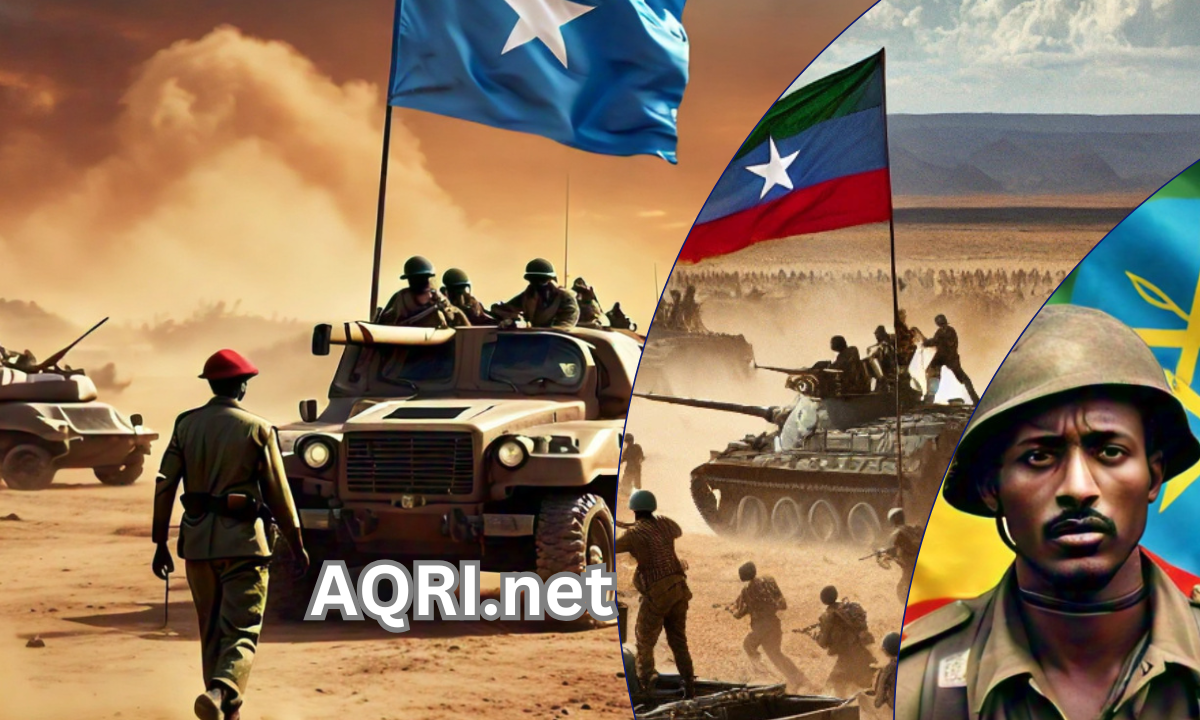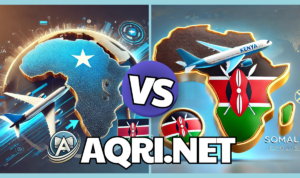AQRI.net Report: How Somalia’s Military Outmatched Ethiopia in the 1977 Ogaden War
In 1977, the world witnessed one of the most remarkable military achievements in African history. Somalia, with a population of just 5 million, took on Ethiopia, a nation of 50 million, in the fierce Ogaden War—and for much of the conflict, Somalia emerged victorious on the battlefield. This David vs. Goliath scenario captivated global attention as Somali forces pushed deep into Ethiopian territory, defying expectations and marking a significant chapter in the Horn of Africa’s Cold War history.
The Lead-Up to the Conflict
The Ogaden War was rooted in territorial disputes over the Somali-inhabited Ogaden region, a vast arid expanse in Ethiopia. Somali President Siad Barre, driven by nationalist aspirations to unite all Somali-speaking people under a “Greater Somalia,” launched a full-scale military campaign in July 1977. Despite its smaller size, Somalia’s military was highly organized, well-trained, and initially equipped with Soviet arms, making them a formidable force.
Ethiopia, in contrast, was dealing with internal turmoil. The Derg, a Marxist military regime led by Mengistu Haile Mariam, had recently overthrown Emperor Haile Selassie, plunging the country into political chaos. This instability played to Somalia’s advantage, allowing its military to strike swiftly and decisively.
Early Somali Victories
In the early months of the war, Somali forces achieved significant victories. Western media outlets were stunned by the success of a small nation against its larger neighbor. By September 1977, Somalia had seized about 90% of the Ogaden region, including key towns like Jijiga, creating shockwaves not only in Ethiopia but also among global observers.

International reports painted a picture of Somalia’s military as a disciplined, tactically superior force. Somali troops, leveraging their familiarity with the arid landscape and boosted by strong nationalist fervor, consistently outmaneuvered Ethiopian forces. Headlines across the globe chronicled Somalia’s early gains, with publications like The New York Times noting, “Somalia’s remarkable military efficiency is defying the odds in this David vs. Goliath contest.”
The Role of Cold War Alliances
Somalia’s military success was initially supported by the Soviet Union, which had provided arms and training. However, the tide began to shift when the Soviets switched sides, aligning with Ethiopia due to its Marxist government. In a dramatic turn of events, Ethiopia began receiving massive military aid from the Soviet Union and Cuba, including advisors, advanced weaponry, and thousands of Cuban troops.
As Cold War politics took center stage, Ethiopia’s military capabilities were revitalized, and by March 1978, Somali forces faced a counteroffensive that pushed them back from their initial gains. Global media shifted focus to the international intervention that altered the dynamics of the war.
The Impact of Somalia’s Early Success
Despite the eventual stalemate and retreat, Somalia’s early victories in the Ogaden War remain a source of national pride. For a brief period, Somalia demonstrated its ability to outmaneuver and outperform a much larger adversary. The initial success on the battlefield underscored the strategic brilliance of Somali commanders and the high morale of its soldiers, who were fighting for the unification of the Somali people.
This war also left a lasting legacy on the region. Though Ethiopia, with Soviet and Cuban backing, managed to reclaim the Ogaden, the conflict exposed Ethiopia’s vulnerabilities during its internal upheaval and showcased the resilience of the Somali military.








Comment